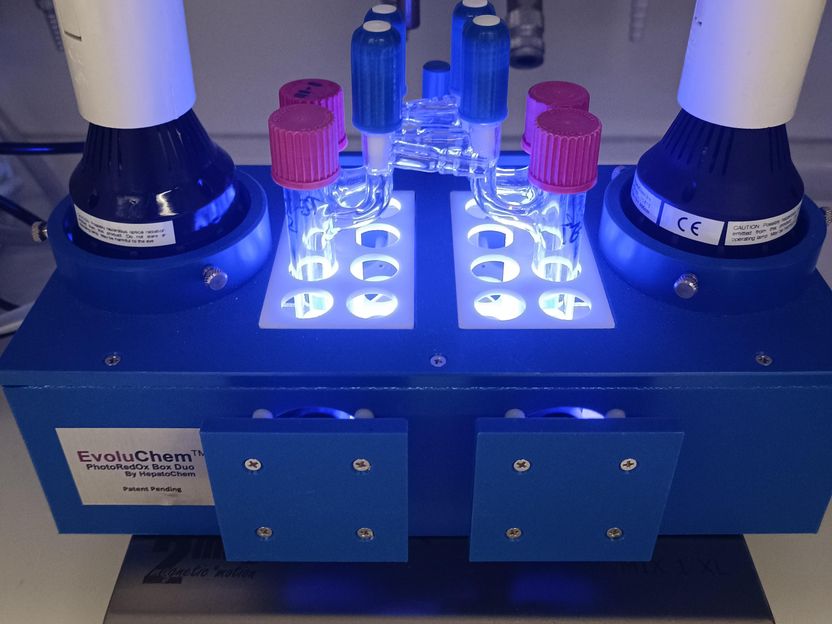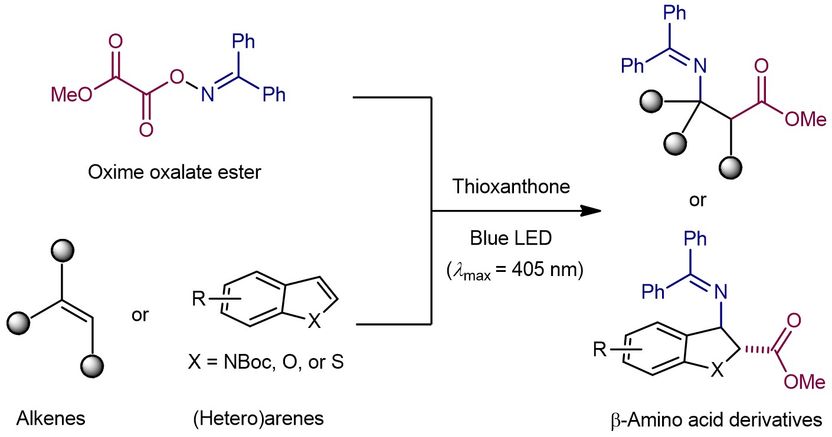Light as a tool for the synthesis of complex molecules
Chemists at the University of Münster have developed a novel and straightforward way to produce complex organic molecules
Advertisement
Chemists at the University of Münster have developed a novel and straightforward way to produce complex organic molecules. Mild reaction conditions, simple operation, scalability and the use of an inexpensive and commercially available photosensitizer make the method interesting for industrial applications.
"Visible light has proven to be a powerful tool for the synthesis of complex organic molecules," explains Prof. Dr. Frank Glorius. "With its energy, we succeed in breaking certain chemical bonds X-Y." The resulting X and Y fragments are highly reactive, so-called "radicals." They can rapidly react with olefins A in a controlled manner, creating biologically valuable molecules (X-A-Y): β-amino acids. In this way, the Glorius group has succeeded in synthesizing a bifunctional oxime oxalate ester that provides both amine and ester functionalities for the reaction via an energy transfer strategy (EnT). This metal-free and mild method also features a broad substrate palette with up to 140 examples and excellent tolerance to sensitive functional groups. "Substrates ranging from the simplest ethylene to complex (hetero)arenes can participate in the reaction, providing general and practical access to β-amino acid derivatives - even those with previously inaccessible structural features." β-Amino acids are frequently used as important components in numerous biologically active molecules, such as drugs and natural products.

Blue light is used as a tool for the synthesis of complex molecules called β-amino acid derivatives.
AG Glorius

AG Glorius

AG Glorius



About the method
The aminocarboxylation reaction was carried out under simple and mild photochemical conditions. The authors of the study used an inexpensive and commercially available thioxanthone as the organic photosensitizer. Most other methods for the preparation of β-amino acid derivatives require metal-mediated multistep manipulations of pre-functionalized substrates. In contrast, energy transfer enables a metal-free, highly regioselective intermolecular reaction for the one-step incorporation of both amine and ester functionalities into alkenes or (hetero)arenes. For the simultaneous formatin of C-centered ester and N-centered iminyl radicals, an oxime oxalic acid ester was used as a bifunctional reagent.
Other news from the department science
Most read news
More news from our other portals
See the theme worlds for related content
Topic world Synthesis
Chemical synthesis is at the heart of modern chemistry and enables the targeted production of molecules with specific properties. By combining starting materials in defined reaction conditions, chemists can create a wide range of compounds, from simple molecules to complex active ingredients.

Topic world Synthesis
Chemical synthesis is at the heart of modern chemistry and enables the targeted production of molecules with specific properties. By combining starting materials in defined reaction conditions, chemists can create a wide range of compounds, from simple molecules to complex active ingredients.

































































